baptist chapel, South Street
baptist chapel
South Street
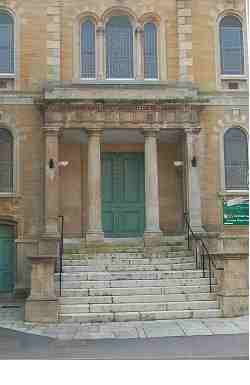 The
Conventicle Act
of 1664 made
persons
attending
private
assemblies for
religious
worship liable
to severe
penalties yet
several sects
are known to
have been active
in and around
Yeovil, the
earliest on
record being the
Baptists with
their Yeovil
church being
first mentioned
on 12 February
1656.
The
Conventicle Act
of 1664 made
persons
attending
private
assemblies for
religious
worship liable
to severe
penalties yet
several sects
are known to
have been active
in and around
Yeovil, the
earliest on
record being the
Baptists with
their Yeovil
church being
first mentioned
on 12 February
1656.
Their meetings
in the town, of
necessity in
secret at first,
were in
South
Street, from
1668 in a barn
built by John
Cary. The barn
was converted to
a Meeting House
some time prior
to 1717.
Meetings
continued to be
held in the
barn.
It was recorded
that in 1700 the
Pastor of the
Baptist Church
at Yeovil was
Thomas Miller,
commonly known
as Captain
Miller from his
having been an officer
both Cromwell's and
Monmouth's
armies
In 1810 a chapel was built on or near the site of the barn, but because of the growing congregation, it was replaced by a larger building in 1828.
In 1827, while building work on the new Baptist Chapel was in progress, the church congregation gathered for worship in a building owned by Messrs W & E Whitby in Frost's Yard at the corner of Vicarage Street and Middle Street. Monthly church meetings took place as usual in Elias Whitby's kitchen in Middle Street.
In 1837 the minutes of the Baptist Chapel of 16 August state "An Act having been passed enabling Dissenters to celebrate marriages in their own places of worship, the chapel having been duly licensed according to law - On this day the first marriage was performed by our pastor between Thomas Lye and Rebecca Munford of Martock, in the presence of our brother, Elias Whitby Superintendent Registrar, brother Porter Registrar of Marriages and several hundred persons. It is also gratefully recorded that our brother Whitby granted the Certificate of License for the Chapel without receiving the Fee of three pounds to which he was a legally entitled." This was the first marriage to take place in a dissenting place of worship in Yeovil.
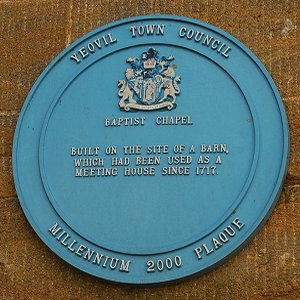 Vickery, in
1856, commented
“There are
catacombs under
the chapel, but
they are very
rarely opened.
There is also a
small
burial-ground in
front of the
chapel. The
present pastor
is the Rev R
James”. Richard
James came from
Northamptonshire
and in the 1851
census was
listed as a
35-year old
Baptist Minister
living at 12
Peter Street
with his wife
Sophia, two
young children
and a house
servant.
Vickery, in
1856, commented
“There are
catacombs under
the chapel, but
they are very
rarely opened.
There is also a
small
burial-ground in
front of the
chapel. The
present pastor
is the Rev R
James”. Richard
James came from
Northamptonshire
and in the 1851
census was
listed as a
35-year old
Baptist Minister
living at 12
Peter Street
with his wife
Sophia, two
young children
and a house
servant.
In 1890 Ayr House in Hendford was built as the Manse for the Minister.
|
Church Congregations From the Ecclesiastic Survey, March 1851 |
|
|
St John's |
614 |
|
Holy Trinity, Peter Street |
550 |
|
Congregational (now United Reformed), Princes Street |
530 |
|
Baptist, South Street |
300 |
|
Methodist, Middle Street |
250 |
|
Calvinist Baptist, Tabernacle Lane |
190 |
|
Brethren Hall, Vicarage Street |
93 |
|
Quaker Meeting House, Kingston |
8 |
The Baptist Chapel was enlarged in 1868 and a choir added in 1898. In 1912 the Newnam Memorial Hall and Schools were added (designed by Newby, Vincent & Findlay Smith of Southampton), being used as a Red Cross hospital during the 1914-18 war.
For a list of Baptist Ministers - click here
Gallery
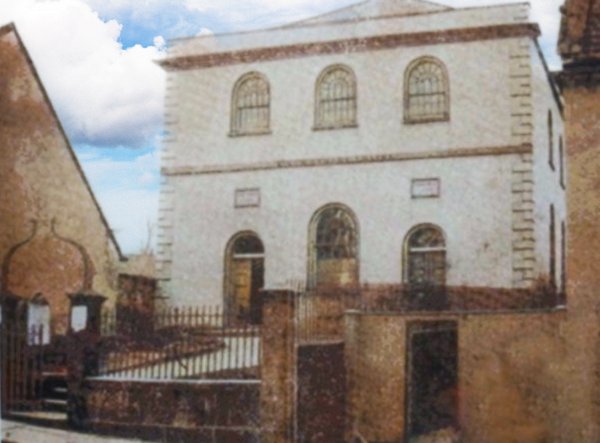
This colourised photograph
features in my
books 'Yeovil
From Old
Photographs'
and
"Yeovil
In 50 Buildings"
A photograph
of the Baptist
Chapel before
1867 (the porch
was added in
1868). Note the
front elevation
is completely
different to the
present
elevation, note
too the absence
of the Newnam
Hall, built in
1912.
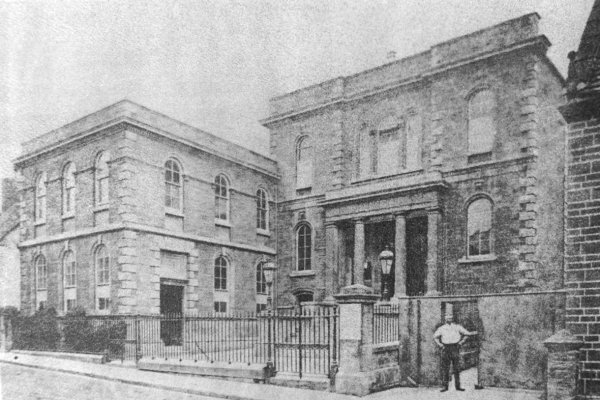
The Newnam Hall
and Schools and
the Baptist
Church before
the construction
of
Petters Way
alongside.
Photographed
about 1912.
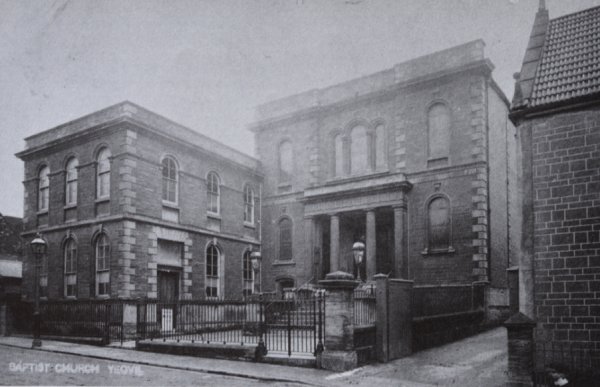
This
image
features in my
book 'Yeovil
- The Postcard
Collection'.
Also photographed in 1912, but without the man standing there.
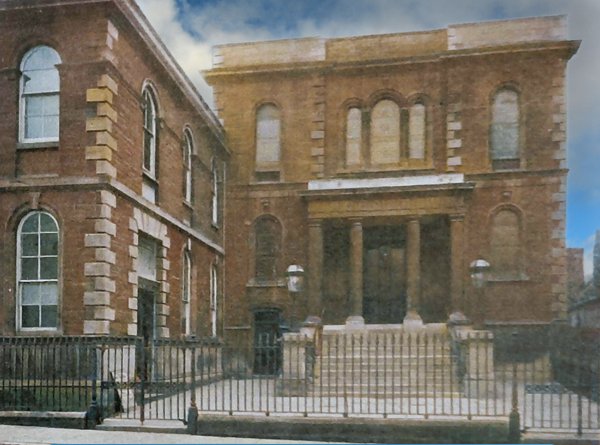
This
colourised photograph
features in my
book 'Yeovil
From Old
Photographs'
This photograph was taken by Yeovil Photographer Jarratt Beckett and published in his 1897 book "Somerset viewed through a Camera".
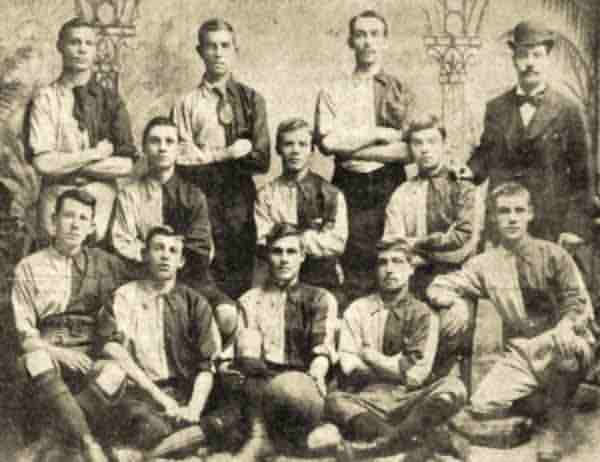
The Yeovil Baptist Football Club team of 1892.
Back row,
left to right;
Mooney, W
Pittard,
Pittard, W
Mitchell
(Referee)
Middle row, left
to right; S
Westcott, F
Perry, W Harper
Front row, left
to right; J
Quarrel, Seway,
E Foan, H Sipley
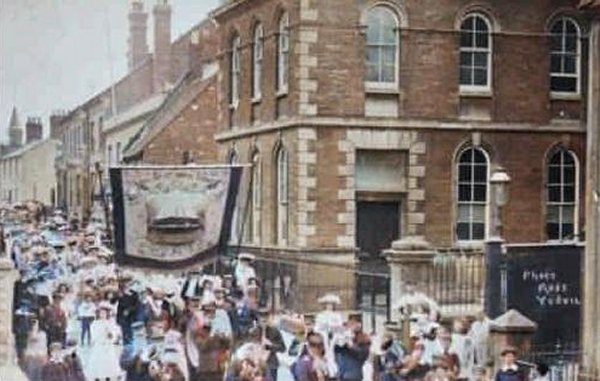
The annual Yeovil Baptist School Parade passes by the Newnham Hall and the Baptist church.
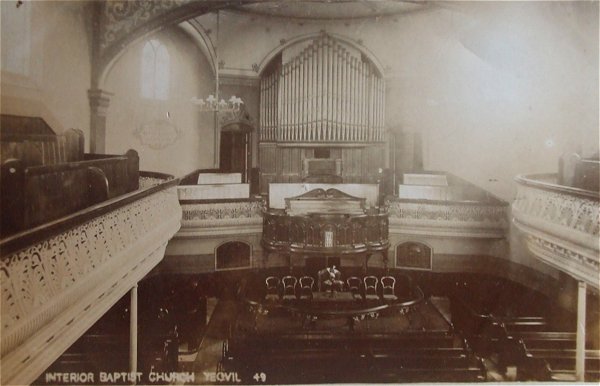
A postcard (I'm guessing from the 1930s) showing the interior of the Baptist chapel.
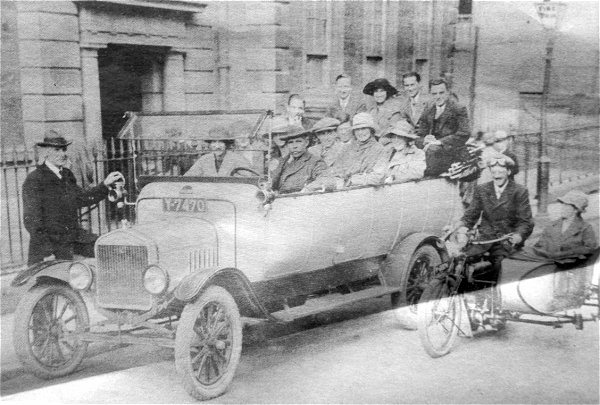
Courtesy of
Colin Haine
Members of the Baptist church congregation enjoy a charabanc outing on Whit Monday bank holiday in 1921, as published in the Western Gazette. On the motorbike is Fred Rendell (brother of the photographer) and the minister standing at left is Mr Gummer-Butt. Other known passengers are Clifford Ford, Timmy Hicks, Ernest Harbour, Wreford Andrews, Mary Rendell, Arthur Riggs and Dorothy January.
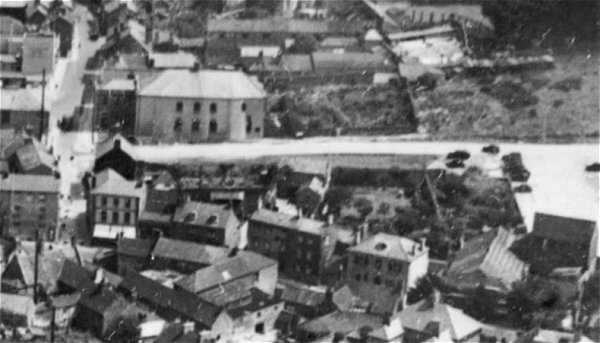
This aerial photograph dates to 1935 and shows Petters Way running across the photograph from South Street, at left, to the car park at right. Buildings of note are - the Greyhound Inn at very top left, the Baptist church at top left, the Three Choughs Hotel at centre left edge with the junction of South Street with Hendford to its right. On the opposite corner the buildings running along the east side of Hendford (with their street elevations facing us) are Chudleigh's seed merchants, the small shop that had been John Chaffin's photographic studio (later the WI Market), next to the Butcher's Arms. Next is Flower's House then Ayr Villa and finally the furniture emporium known as The Rink owned by Henry White. Note that in the top right hand corner is the field that the Yeovil Law Courts and Police Station would be built on three years later, in 1938.
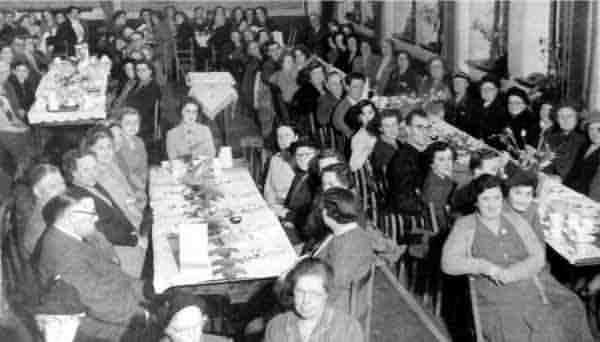
The 1952 South Street Baptist chapel harvest supper.
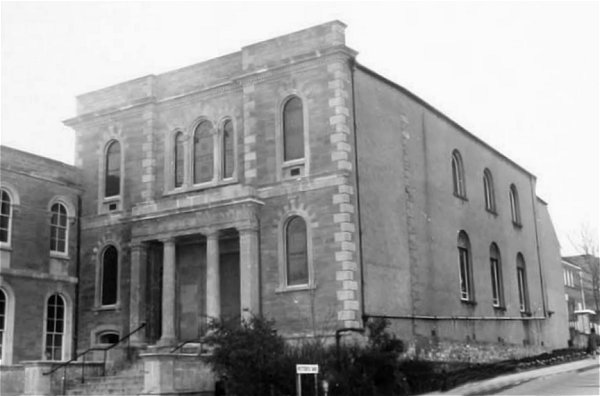
Photographed in 1971.
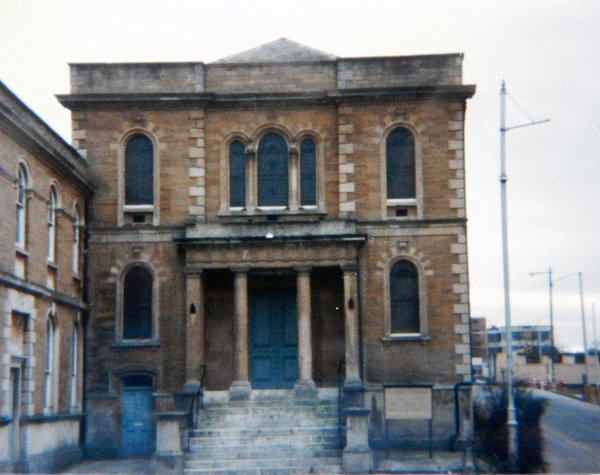
Courtesy of
Colin Haine
The Baptist Chapel photographed in 1983 with Petters Way at right.
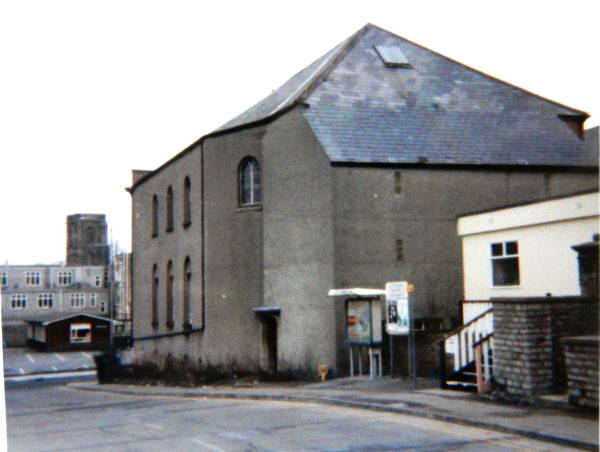
Courtesy of
Colin Haine
An interesting shot of the rear of the Baptist Chapel photographed in 1983 from Petters Way. At extreme right the wooden shed, approached up a short flight of wooden steps, was a town centre presence office of the Council's Housing Department. At far left is seen the 'shed' in the car park behind the municipal buildings of King George Street. At the end closest to the photographer was the Children's Library and at the far end, next to Borough Arcade, was my office for several years in the 1980s.
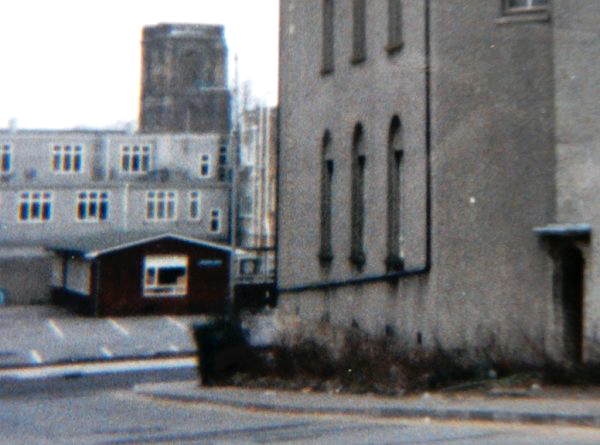
Courtesy of
Colin Haine
An enlargement from the previous photo showing the 'shed' that held the Children's Library at one end and my office at the other.
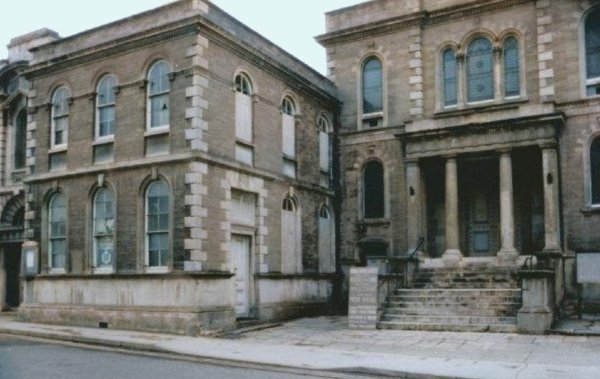
Photograph
(colourised) by
Trevor Hussey,
courtesy of Mrs
Anne Hussey
The Newnam Hall and the entrance to the Baptist Chapel, photographed in 1990.
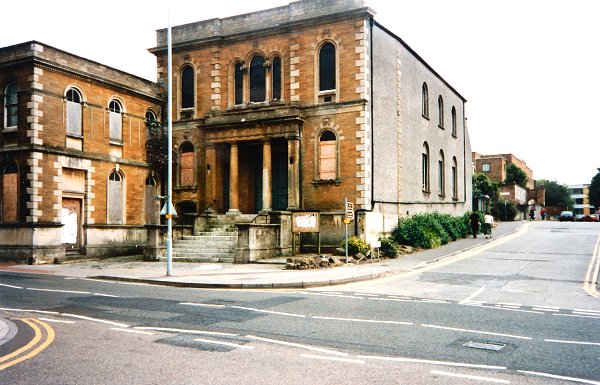
Courtesy of
Vivien and John
Cornelius
The side of Newnam Hall, the Baptist chapel and Petters Way, photographed in 2002.
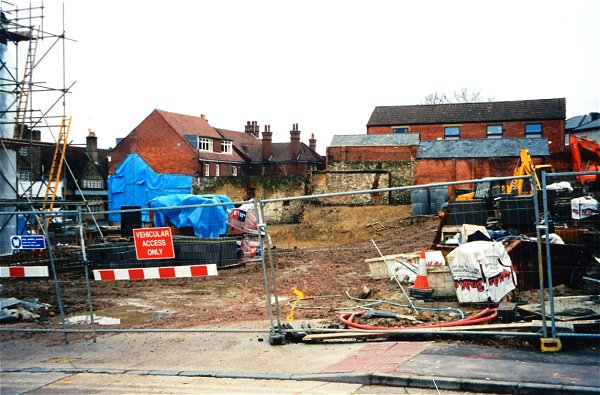
Courtesy of
Vivien and John
Cornelius
The site at the rear of the Baptist chapel being cleared ready for residential redevelopment and the partial rebuilding of the chapel itself. Photographed from Petters Way in 2002.
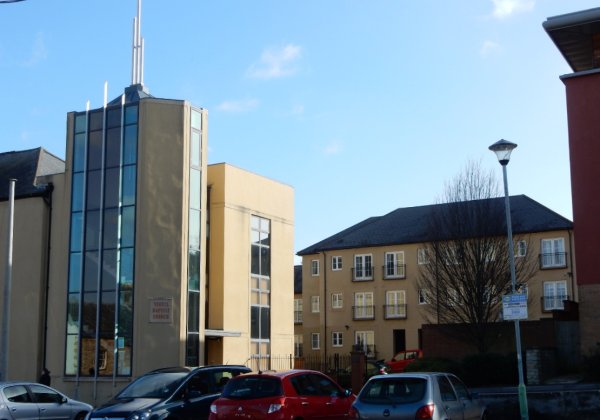
The new sheltered housing scheme built on the site of the previous photograph, seen in 2015.
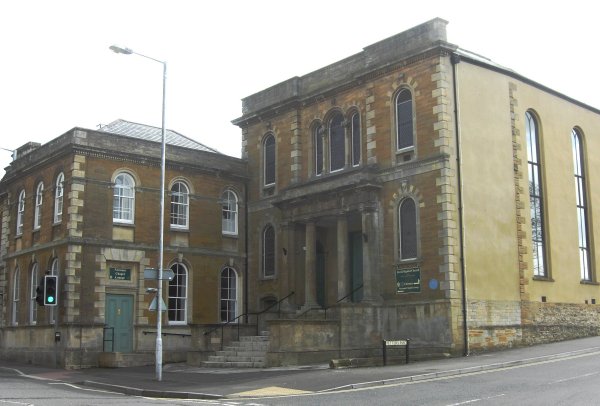
The Baptist
Church photographed
in 2013.
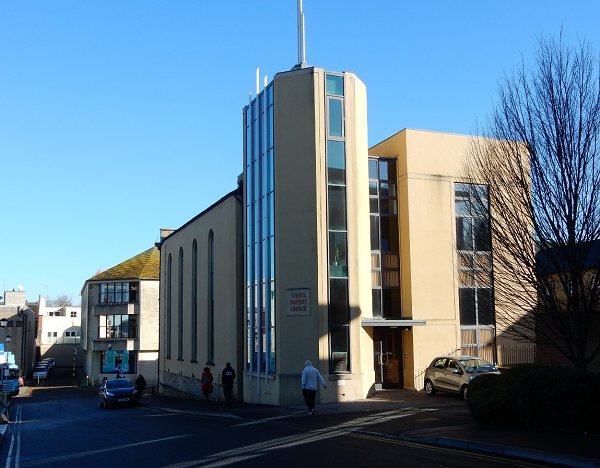
The rear of the Baptist church photographed from Petters Way in 2015.
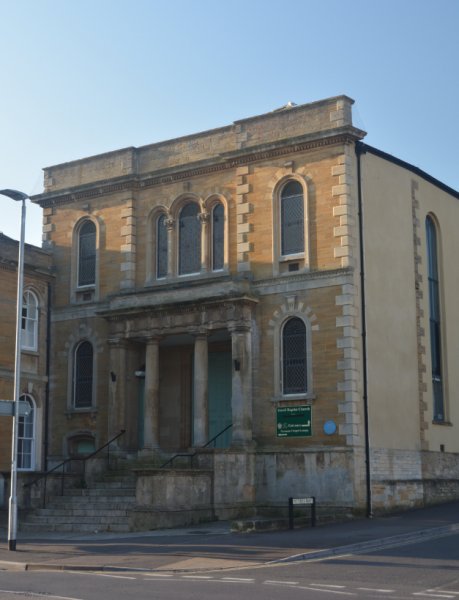
This photograph
features in my
book "Yeovil
In 50 Buildings"
The South Street elevation photographed in 2017.